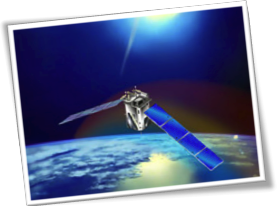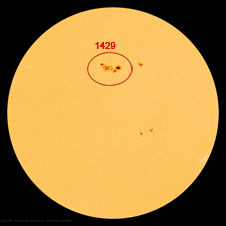On June 5, 2012, Venus will transit the face of the sun in an event of both historical and observational importance. The best places to watch are in the south Pacific, but travel is not required. The event will also be visible around sunset from the USA. The next transit of Venus won’t happen again until December 2117, 105 years from now. (Note: The pattern is + 8 + 105.5 + 8 + 121.5 +…)
Tag: NASA Science Update
NASA Space Telescope Sees the Light from an Alien Super-Earth
 NASA’s Spitzer Space Telescope has detected light emanating from a “super-Earth” beyond our solar system for the first time. While the planet is not habitable, the detection is a historic step toward the eventual search for signs of life on other planets.
NASA’s Spitzer Space Telescope has detected light emanating from a “super-Earth” beyond our solar system for the first time. While the planet is not habitable, the detection is a historic step toward the eventual search for signs of life on other planets.
The planet, called 55 Cancri e, falls into a class of planets termed super Earths, which are more massive than our home world but lighter than giant planets like Neptune. The planet is about twice as big and eight times as massive as Earth. It orbits a bright star, called 55 Cancri, in a mere 18 hours.
Link to the NES Virtual Campus home page.
NASA Measures Impact of Huge Solar Flare on Earth's Atmosphere
 A key NASA instrument that can directly measure the impact of solar events on Earth’s upper atmosphere has “weighed in” on the huge flare that impacted Earth recently.
A key NASA instrument that can directly measure the impact of solar events on Earth’s upper atmosphere has “weighed in” on the huge flare that impacted Earth recently.
The flare was considered one of the largest solar events in years, even though its impact on the power grid and communications was minimal due to the angle it hit Earth.
To read more and watch a video about this huge solar flare, visit https://www.nasa.gov/mission_pages/sunearth/news/saber-solarstorm.html.This feature story acts as an excellent extension to the NASA Explorer Schools featured lesson Geometry: Space Math Problems — Solar Storms. In this lesson, students use geometry and measurement to track solar activity.
Lyrid Meteor Shower
If you have to chose just one night in April to go out and look at the stars, NASA scientists say it should be Saturday, Apr. 21st.
Evolution of the Moon
Evolution of the Moon: From year to year, the moon never seems to change. Craters and other formations appear to be permanent now, but the moon didn’t always look like this. Thanks to NASA’s Lunar Reconnaissance Orbiter, we now have a better look at some of the moon’s history.
Link to the NES Virtual Campus home page.
Arctic Runoff Not Affecting Ocean Conveyor Belt
A new study by NASA and University of Washington allays concerns that melting Arctic sea ice could be increasing the amount of fresh water in the Arctic enough to have an impact on the global “ocean conveyor belt” that redistributes heat around our planet.
Big Sunspot Remains Active
Space Math Problems — Solar Storms
How do NASA scientists use geometry and measurement to predict the behavior of dangerous solar storms?
Use the problems in the NES featured lesson, Geometry: Space Math Problems — Solar Storms, to bring relevance to your classroom by connecting your lesson to recent solar activity. In these problems, students analyze images of a solar tsunami and use geometry and measurement skills to find the speed of the wave. They step into the shoes of a NASA scientist and use geometry to find the speed of a coronal mass ejection, or CME, also known as a solar storm. CMEs can have hazardous effects on the International Space Station and astronauts.
Sunspot 1429 Releases Two More M-Class Flares
 Every day our Earth experiences storms of all kinds including one type of storm that we often don’t realize we are experiencing — a solar storm. Thanks to our protective atmosphere and magnetic field called the magnetosphere, we’re safe from the dangers of solar storms.
Every day our Earth experiences storms of all kinds including one type of storm that we often don’t realize we are experiencing — a solar storm. Thanks to our protective atmosphere and magnetic field called the magnetosphere, we’re safe from the dangers of solar storms.
On March 10, 2012, the sun released another two M-class flares. One, rated as an M5.4, peaked at 12:27 a.m. EST. The second, rated as an M 8.4, peaked at 12:44 p.m. EST.These two flares came from the same active region on the sun, designated number 1429, that has already produced three X-class and numerous M-class flares over the past week.
On March 8, 2012 at 10:53 p.m. EST the sun erupted with an M6.3 class flare, and about an hour later released a coronal mass ejection or CME. These eruptions came from active region 1429 that has so far produced two X class flares, and numerous M-class flares.
NASA’s Space Weather Center models measure the CME traveling at speeds of over 700 miles per second.
The Sun — Impact of Solar Activity on Earth
Knowing when a solar flare, or CME, is going to occur is important for our satellites in orbit, for astronauts in space, and even for power companies on the ground. Instruments on board satellites now improve these predictions.
Should we be concerned about recent solar storms?
Link to the NES Virtual Campus home page.
